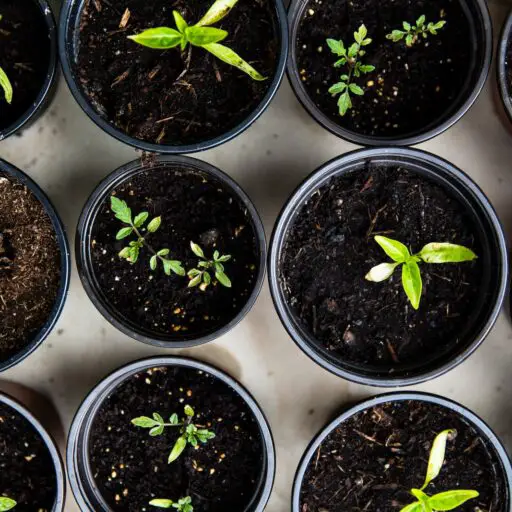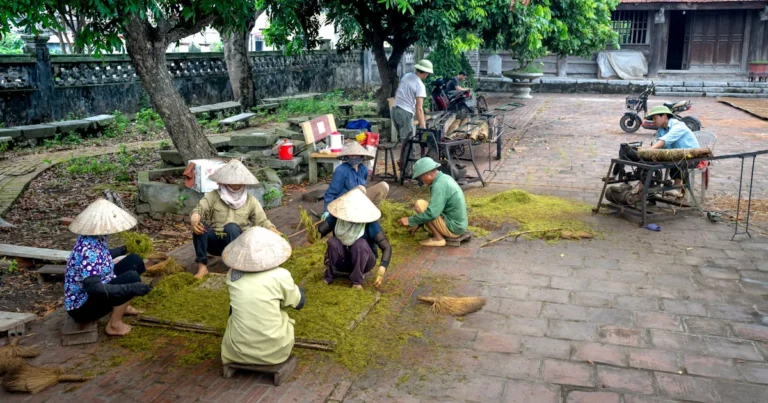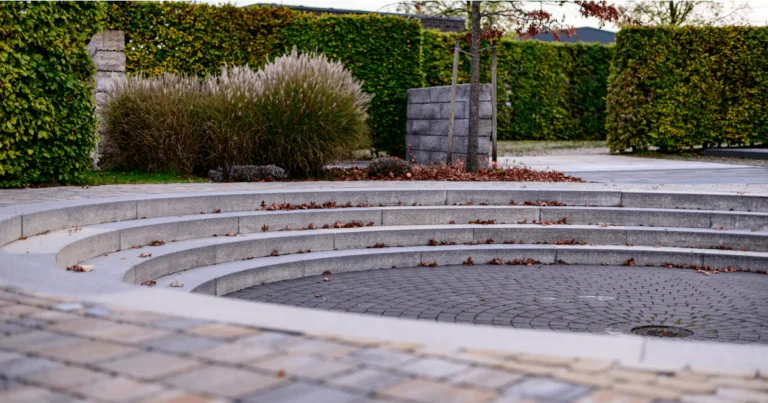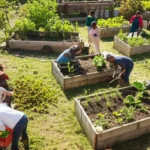Support our educational content for free when you purchase through links on our site. Learn more
Have you ever dreamt of transforming a neglected patch of land into a vibrant community garden? It’s more achievable than you think! We at Community Gardening™ have helped countless communities bring their green dreams to life, and we’re here to guide you every step of the way. This comprehensive guide outlines seven key steps to successfully advocate for and establish your own community garden, from assembling your dream team to navigating the legal landscape. Remember that one person’s vision can spark a movement – are you ready to be that spark?
Our team has witnessed firsthand the incredible power of community gardens to transform neighborhoods, fostering social connections, improving access to fresh food, and enhancing environmental well-being. We’ve learned that success hinges on careful planning, community engagement, and a dash of perseverance. This article will equip you with the knowledge and strategies to overcome common challenges and celebrate your garden’s success.
Key Takeaways
- Building a strong team is crucial: Recruit diverse members with complementary skills and experience.
- Secure funding through grants, crowdfunding, and sponsorships: Develop a comprehensive fundraising plan.
- Navigate the legal landscape: Obtain necessary permits and insurance.
- Engage your community: Host workshops, events, and meetings to build excitement and involvement.
- Design a sustainable and accessible garden: Prioritize accessibility and incorporate sustainable practices.
- Maintain your garden: Develop a maintenance plan and establish clear rules and guidelines.
- Celebrate your success: Share your story and highlight the positive impact of your garden.
👉 Shop essential gardening supplies:
- Gardening Gloves: Amazon | Walmart | Home Depot
- Gardening Tools Set: Amazon | Walmart | Ace Hardware
- Raised Garden Beds: Amazon | Walmart | Wayfair
Table of Contents
The History and Evolution of Community Gardens
Finding the Perfect Spot for Your Community Garden: Location, Location, Location!
1. Assembling Your Dream Team: Building a Community Garden Coalition
2. Securing the Land: Negotiating with Landowners and City Officials
3. Funding Your Green Oasis: Grant Writing and Fundraising Strategies
4. Navigating the Legal Landscape: Permits, Zoning, and Insurance
5. Designing Your Community Garden: Layout, Accessibility, and Sustainability
6. Building Community Buy-in: Engaging Residents and Volunteers
7. Maintaining Your Garden Paradise: Ongoing Management and Sustainability
Overcoming Obstacles: Addressing Common Challenges in Community Garden Development
Celebrating Successes: Showcasing Your Community Garden’s Impact
Community Garden Success Stories: Inspiration and Best Practices
Quick Tips and Facts
Want to start a community garden? Fantastic! 🎉 Let’s get growing! First, here are some quick tips to get you started:
- Start small: Don’t try to tackle everything at once. Begin with a manageable plot and expand as you gain experience and support.
- Build a team: A community garden thrives on collaboration. Recruit passionate neighbors, local organizations, and experts. Learn how you will promote gardening in your community! How will you promote gardening in your community?
- Secure funding: Explore grants, crowdfunding, and sponsorships. Many organizations support community gardening initiatives.
- Legal matters: Check zoning regulations, obtain necessary permits, and secure liability insurance.
- Engage your community: Host workshops, potlucks, and events to build excitement and involvement.
Here are some interesting facts about community gardens:
- Community gardens can improve mental health and reduce stress. Source: American Horticultural Therapy Association
- They increase access to fresh, healthy food, particularly in food deserts. Source: USDA
- They foster a sense of community and social connection. Source: National Gardening Association
- They can improve environmental quality by reducing stormwater runoff and increasing biodiversity. Source: EPA
We’ve learned from experience that the most successful community gardens are those that are well-planned, well-funded, and have strong community support. Let’s dive deeper!
The History and Evolution of Community Gardens
Community gardens have a rich history, evolving from simple plots to vibrant hubs of social and environmental action. Did you know that the concept of community gardens dates back centuries? Early forms existed in various cultures, often serving as essential sources of food and social interaction. However, the modern community garden movement gained momentum in the United States during the late 19th and early 20th centuries, often as responses to urban poverty and food insecurity.
The movement experienced a resurgence in the 1970s, fueled by concerns about environmental sustainability and the desire for greater community engagement. Today, community gardens are found in cities and towns across the globe, playing a vital role in promoting food security, environmental stewardship, and social cohesion. They’ve become powerful tools for community building and empowerment, offering opportunities for education, skill-building, and social interaction. We’ve seen firsthand how they can transform neglected spaces into vibrant oases of green, fostering a sense of pride and ownership within the community. Learn more about the benefits of community gardens here: Benefits of Community Gardens.
Finding the Perfect Spot for Your Community Garden: Location, Location, Location!
Choosing the right location is crucial for a thriving community garden. Consider these factors:
- Accessibility: Is the site easily accessible to all members of the community, including those with disabilities? Think about proximity to public transportation, parking, and pathways.
- Sunlight: Most vegetables need at least six hours of sunlight per day. Assess the site’s sun exposure throughout the day.
- Soil quality: Test the soil to determine its composition and fertility. Poor soil may require significant amendment.
- Water access: Ensure a reliable source of water is available for irrigation.
- Zoning regulations: Check local zoning laws to ensure that a community garden is permitted on the chosen site.
- Size and shape: Choose a size that is appropriate for the number of participants and the scale of the project. Consider the layout and how it will be used.
We’ve found that involving the community in the site selection process can foster a greater sense of ownership and participation. Consider holding a community meeting to discuss potential locations and gather feedback. Remember, the perfect location will be accessible, sunny, and have good soil! For more ideas, check out our Garden Design Ideas section.
1. Assembling Your Dream Team: Building a Community Garden Coalition
Building a strong team is essential for success. Who should be on your team?
- Community members: Recruit enthusiastic neighbors who are willing to contribute their time and skills.
- Local experts: Seek advice from experienced gardeners, horticulturalists, and landscape architects.
- Community organizations: Partner with local groups that share your vision, such as schools, churches, or environmental organizations.
- Government officials: Engage with city council members, park officials, and other relevant authorities to secure support and permits.
Remember, diversity of skills and perspectives is key. We’ve seen firsthand how a diverse team can bring a wide range of talents and ideas to the table, leading to a more vibrant and successful community garden. Don’t forget to clearly define roles and responsibilities to avoid confusion and ensure smooth operations. Consider creating a formal organizational structure with elected officers and committees to manage different aspects of the garden.
2. Securing the Land: Negotiating with Landowners and City Officials
Finding suitable land can be challenging. Here’s how to navigate the process:
- Identify potential sites: Look for underutilized public land, such as vacant lots or park areas. Private landowners may also be willing to lease land for a community garden.
- Contact landowners: Approach landowners directly to express your interest and propose a partnership. Be prepared to present a detailed plan outlining your vision, goals, and management strategy.
- Negotiate terms: Discuss lease agreements, responsibilities, and potential benefits for the landowner.
- Seek city approvals: If using public land, obtain necessary permits and approvals from city officials. This may involve navigating zoning regulations, environmental reviews, and other bureaucratic processes.
We’ve had success by presenting a well-researched proposal that demonstrates the benefits of the community garden to the landowner and the city. Highlighting the positive community impact, environmental benefits, and potential for increased property values can be persuasive. Be patient and persistent – securing land can take time and effort.
3. Funding Your Green Oasis: Grant Writing and Fundraising Strategies
Funding is crucial for establishing and maintaining a community garden. Explore these options:
- Grants: Research grants from foundations, government agencies, and corporations that support community gardening projects. Source: GrantWatch
- Crowdfunding: Utilize online platforms like GoFundMe or Kickstarter to raise funds from individuals and organizations.
- Sponsorships: Seek sponsorships from local businesses in exchange for advertising or recognition.
- Fundraising events: Organize events like plant sales, farmers’ markets, or community dinners to generate revenue.
We recommend developing a comprehensive fundraising plan that outlines your budget, funding sources, and timeline. A well-written grant proposal is essential for securing funding from foundations and government agencies. Make sure to highlight the impact of your project and demonstrate your ability to manage funds responsibly. Remember to track your income and expenses meticulously and maintain transparent financial records.
4. Navigating the Legal Landscape: Permits, Zoning, and Insurance
Before you start digging, understand the legal requirements:
- Zoning regulations: Check with your local government to ensure your chosen site is zoned for a community garden.
- Permits: Obtain any necessary permits for construction, landscaping, and water usage.
- Liability insurance: Secure liability insurance to protect against accidents or injuries on the garden site.
We strongly advise seeking legal counsel to ensure compliance with all applicable laws and regulations. Failure to obtain necessary permits or insurance could lead to legal issues and delays. Proactive legal planning will save you headaches down the line.
5. Designing Your Community Garden: Layout, Accessibility, and Sustainability
A well-designed garden is both functional and beautiful. Consider these aspects:
- Layout: Plan the layout to maximize sunlight, water efficiency, and accessibility. Consider raised beds for easier access for people with mobility limitations.
- Accessibility: Ensure pathways are wide enough for wheelchairs and other mobility devices. Provide seating areas for rest and socializing.
- Sustainability: Incorporate sustainable practices such as composting, water conservation, and the use of native plants.
We recommend creating a detailed garden plan that includes a site map, planting schedule, and maintenance plan. Involve community members in the design process to ensure their needs and preferences are considered. A well-designed garden will be both productive and enjoyable for everyone. Check out our Edible Plants section for ideas.
6. Building Community Buy-in: Engaging Residents and Volunteers
Community involvement is key to a successful garden. Here’s how to engage residents:
- Community meetings: Hold meetings to discuss the garden’s vision, goals, and plans.
- Volunteer recruitment: Recruit volunteers to help with various tasks, such as planting, weeding, and harvesting.
- Workshops and events: Host workshops on gardening techniques, composting, and other related topics. Organize community events, such as potlucks or festivals, to foster a sense of community.
We’ve found that regular communication and appreciation are crucial for maintaining volunteer engagement. Acknowledge volunteers’ contributions and provide opportunities for them to share their ideas and expertise. A strong sense of community will ensure the garden’s long-term success. Check out our Community Garden Events section for ideas.
7. Maintaining Your Garden Paradise: Ongoing Management and Sustainability
Maintaining a community garden requires ongoing effort. Here’s how to ensure its long-term success:
- Develop a maintenance plan: Create a schedule for tasks such as watering, weeding, fertilizing, and pest control.
- Establish clear rules and guidelines: Develop a set of rules for garden use and maintenance to ensure fairness and prevent conflicts.
- Regular communication: Maintain regular communication with garden members to address concerns and keep everyone informed.
- Seek ongoing support: Continue to seek funding, volunteers, and community support to ensure the garden’s long-term sustainability.
We’ve learned that proactive maintenance and clear communication are essential for preventing problems and ensuring the garden’s long-term health. Regularly inspect the garden for pests, diseases, and other issues. Address problems promptly to prevent them from escalating. Remember, a well-maintained garden is a beautiful and productive asset to the community. Review our Community Garden Policies for guidance.
Overcoming Obstacles: Addressing Common Challenges in Community Garden Development
Developing a community garden isn’t always smooth sailing. Here are some common challenges and how to overcome them:
- Funding limitations: Explore diverse funding options, including grants, sponsorships, and fundraising events.
- Land acquisition difficulties: Be persistent in your search for suitable land and consider alternative options, such as partnering with existing organizations or using smaller plots.
- Volunteer recruitment challenges: Offer diverse volunteer opportunities and provide training and support to volunteers.
- Community conflicts: Establish clear rules and guidelines and foster open communication to resolve conflicts.
- Maintenance issues: Develop a comprehensive maintenance plan and recruit volunteers to help with ongoing maintenance tasks.
Remember, perseverance is key. Don’t be discouraged by setbacks. Learn from your mistakes and adapt your strategies as needed. We’ve overcome many challenges ourselves, and we’re confident that you can too.
Celebrating Successes: Showcasing Your Community Garden’s Impact
Once your garden is up and running, it’s important to celebrate your achievements and showcase the positive impact of your project. Here are some ways to do this:
- Host a grand opening event: Invite community members, local officials, and sponsors to celebrate the launch of your community garden.
- Share your story: Write a blog post or article about your garden’s journey and the positive impact it has had on the community.
- Collect data: Track the amount of food produced, the number of volunteers involved, and the community engagement activities. This data can be used to demonstrate the garden’s impact.
- Partner with local media: Reach out to local newspapers, television stations, and radio programs to share your story and highlight the garden’s success.
By showcasing your garden’s impact, you can inspire others to create their own community gardens and demonstrate the value of community gardening initiatives.
Community Garden Success Stories: Inspiration and Best Practices
Learning from others’ experiences can be invaluable. Here are some examples of successful community gardens:
- The Adam Rogers Community Garden: https://sfrecpark.org/1066/Adam-Rogers-Community-Garden This garden in San Francisco demonstrates the power of community gardens to improve health and environmental conditions in underserved communities.
- The Joseph S. Azar Community Garden: https://www.abccolumbia.com/2024/11/15/joseph-s-azar-community-garden-honors-local-advocate-and-businessman/ This garden in Columbia, South Carolina, serves as a testament to the power of community collaboration and intergenerational learning.
- Karen Washington’s work: https://www.karenthefarmer.com/about Karen Washington’s decades-long advocacy for community gardens in New York City provides a powerful example of the impact that dedicated individuals can have on their communities.
By studying these examples, you can gain valuable insights and best practices for your own community garden project. Remember, success requires planning, collaboration, and a commitment to community engagement.
Conclusion
So, you want to advocate for a community garden? Fantastic! We’ve shown you the steps, from finding the perfect spot to securing funding and building a strong team. Remember, it’s a journey, not a sprint. There will be challenges, but the rewards—a thriving green space, a stronger community, and access to fresh, healthy food—are immeasurable. We’ve shared our experiences, tips, and even some cautionary tales to help you navigate this exciting endeavor. Now it’s your turn to get your hands dirty and make a real difference in your community! Don’t forget to share your progress with us – we love hearing success stories!
Recommended Links
This section contains affiliate links. We may earn a small commission if you purchase through these links, at no extra cost to you. This helps support our work in promoting community gardening.
For tools and supplies:
- Gardening Gloves: Amazon | Walmart | Home Depot
- Gardening Tools Set: Amazon | Walmart | Ace Hardware
- Raised Garden Beds: Amazon | Walmart | Wayfair
For further reading:
- “Gaia’s Garden: A Guide to Home-Scale Permaculture” by Toby Hemenway: Amazon
- “The Vegetable Gardener’s Bible” by Edward C. Smith: Amazon
FAQ
What are the benefits of starting a community garden in my neighborhood?
Increased Access to Fresh Produce:
Community gardens improve access to fresh, healthy food, particularly in areas with limited grocery options (“food deserts”). This can lead to improved diets and better health outcomes for residents.
Enhanced Community Cohesion:
Gardening fosters a sense of community and shared purpose. It brings people together, promoting social interaction and reducing feelings of isolation.
Environmental Benefits:
Community gardens can improve environmental quality by reducing stormwater runoff, increasing biodiversity, and providing green spaces in urban areas.
Educational Opportunities:
Gardens offer opportunities for education and skill-building, teaching people about gardening, sustainability, and healthy eating.
How can I get funding and resources for a community garden project?
Grants:
Numerous organizations offer grants to support community gardening initiatives. Research grants from foundations, government agencies, and corporations that support community gardening projects.
Crowdfunding:
Online platforms like GoFundMe or Kickstarter allow you to raise funds from individuals and organizations.
Sponsorships:
Seek sponsorships from local businesses in exchange for advertising or recognition.
Fundraising Events:
Organize events like plant sales, farmers’ markets, or community dinners to generate revenue.
What are some effective ways to engage my community in a garden initiative?
Community Meetings:
Hold meetings to discuss the garden’s vision, goals, and plans. Involve residents in the decision-making process.
Volunteer Recruitment:
Recruit volunteers to help with various tasks, such as planting, weeding, and harvesting. Offer diverse volunteer opportunities to cater to different skill levels and interests.
Workshops and Events:
Host workshops on gardening techniques, composting, and other related topics. Organize community events, such as potlucks or festivals, to foster a sense of community.
Social Media:
Use social media platforms to promote the garden initiative, share updates, and engage with community members.
How can I work with local government to establish a community garden in a public space?
Identify Potential Sites:
Look for underutilized public land, such as vacant lots or park areas.
Contact City Officials:
Approach city council members, park officials, and other relevant authorities to express your interest and propose a partnership.
Present a Detailed Plan:
Develop a comprehensive plan outlining your vision, goals, and management strategy. Highlight the positive community impact, environmental benefits, and potential for increased property values.
Navigate Bureaucratic Processes:
Be prepared to navigate zoning regulations, environmental reviews, and other bureaucratic processes. Seek legal counsel to ensure compliance with all applicable laws and regulations.
Reference Links
- American Horticultural Therapy Association: https://www.ahta.org/
- USDA: https://www.usda.gov/
- National Gardening Association: https://www.garden.org/onlinecourse/PartI5.htm
- EPA: https://www.epa.gov/
- GrantWatch: https://www.grantwatch.com/
- About Me — Karen Washington: https://www.karenthefarmer.com/about
- Black Urban Growers (BUGS): Find their website via a search engine (Their website may not be readily available)
- Rise & Root Farm: Find their website via a search engine (Their website may not be readily available)





